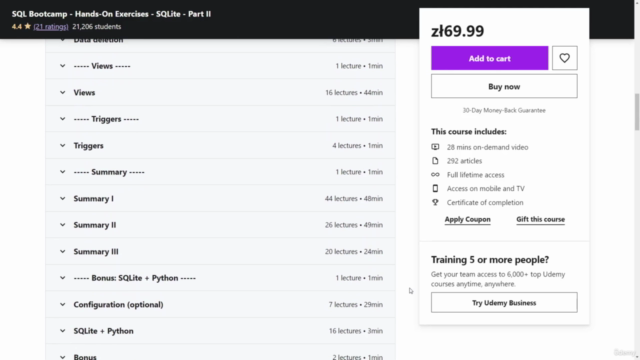SQL Bootcamp - Hands-On Exercises - SQLite - Part II
Advance Your SQL Skills with Hands-On Exercises - Master DDL and DML for Effective Data Management and Manipulation!
4.37 (51 reviews)

44,402
students
3 hours
content
May 2024
last update
$39.99
regular price
What you will learn
solve over 150 exercises in SQL and databases
test yourself in DDL (Data Definition Language) and DML (Data Manipulation Language)
test yourself in creating tables
test yourself in defining column/table constraints
test yourself in working with master and foreign keys
test yourself in inserting, modifying and deleting records
test yourself in creating views, triggers
work with documentation and Stack Overflow
deal with real programming problems
guaranteed instructor support
Screenshots




Related Topics
3880742
udemy ID
2/28/2021
course created date
3/8/2021
course indexed date
Bot
course submited by